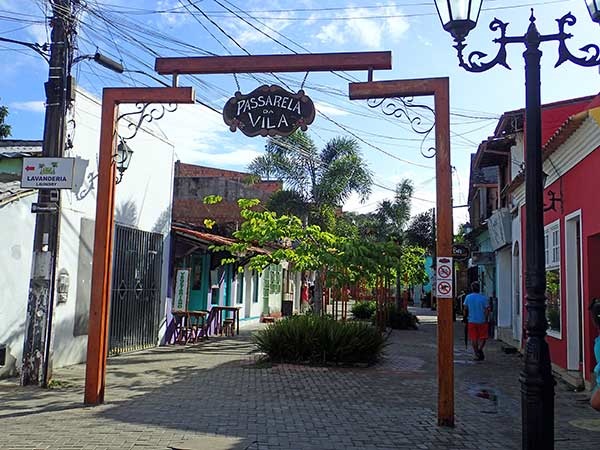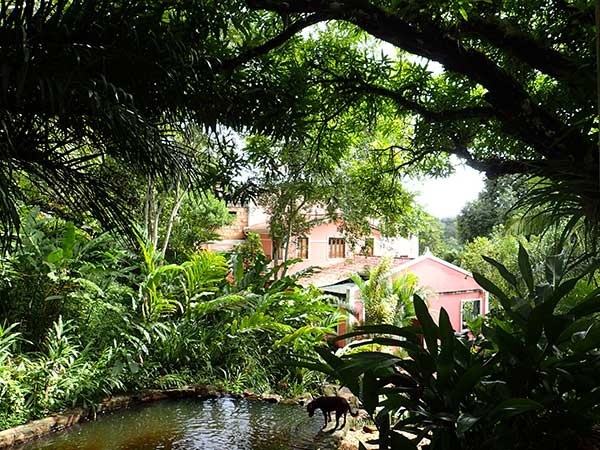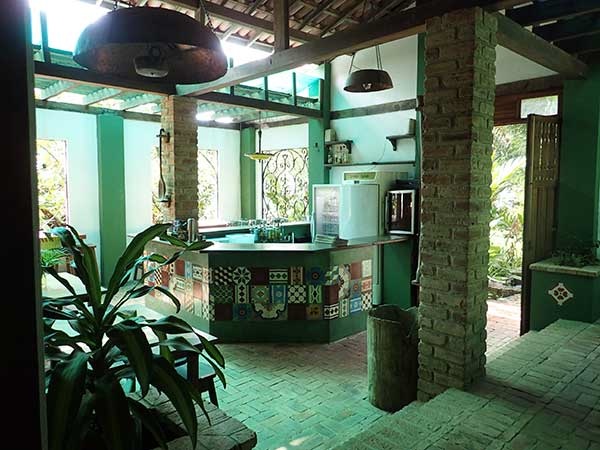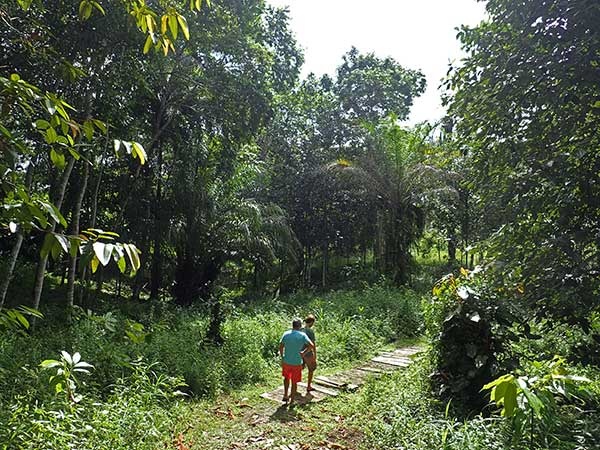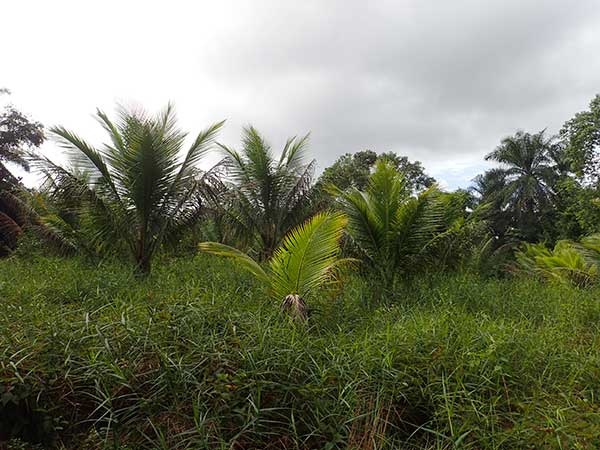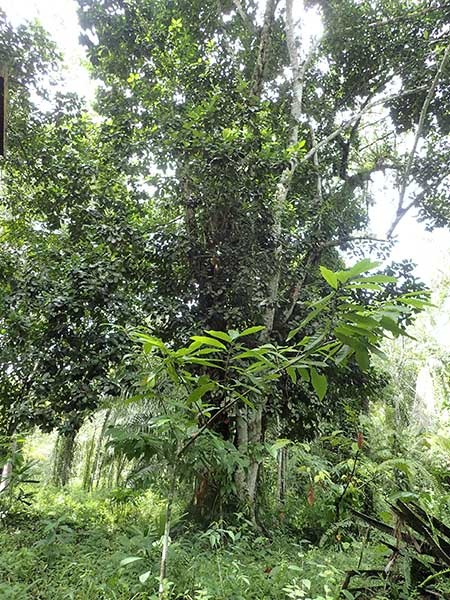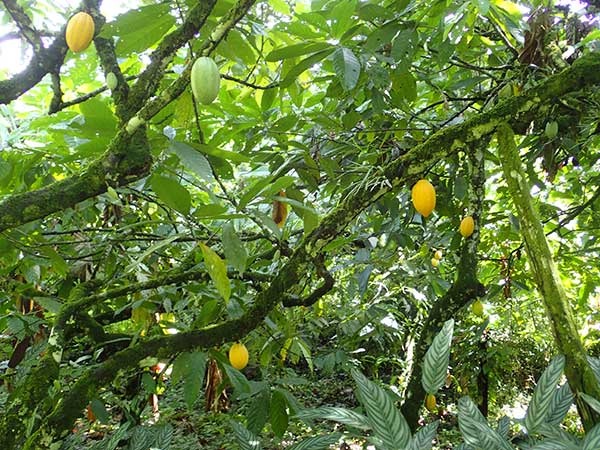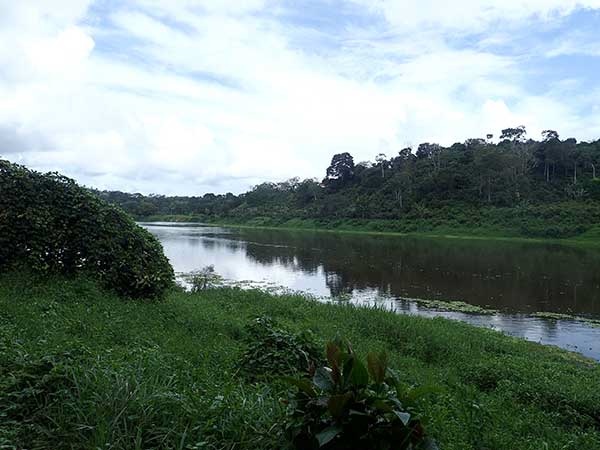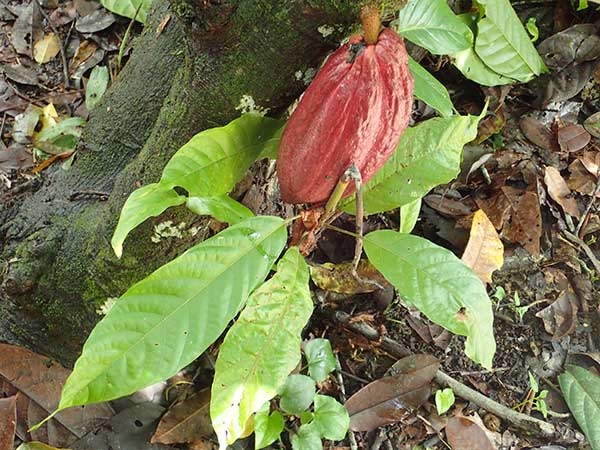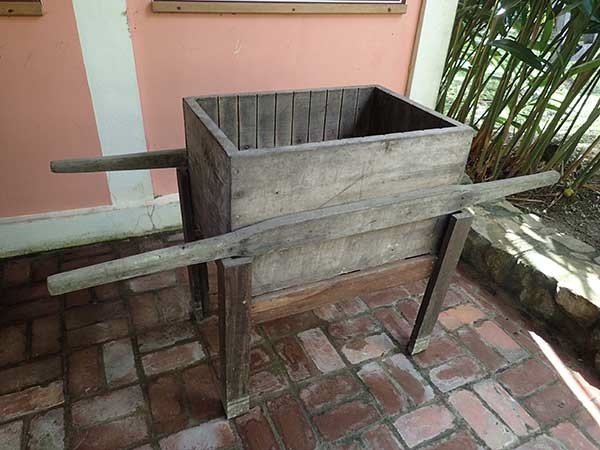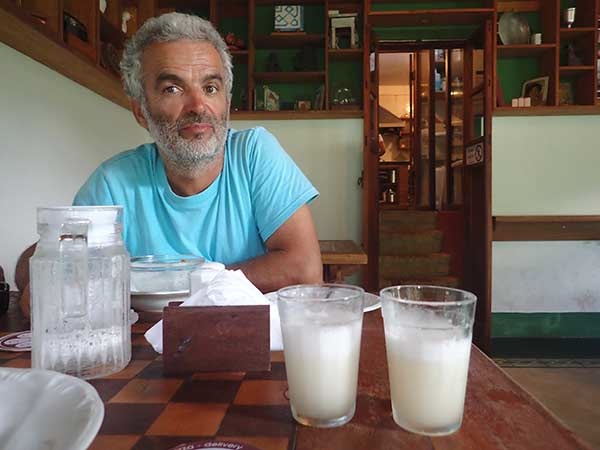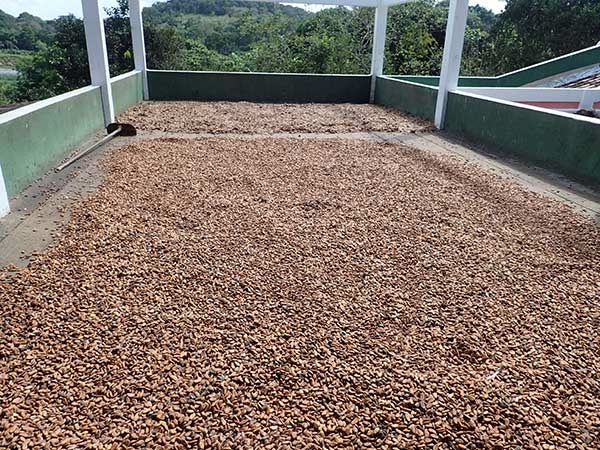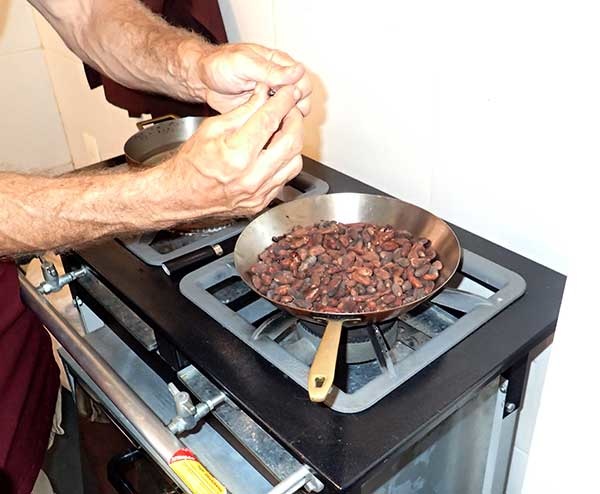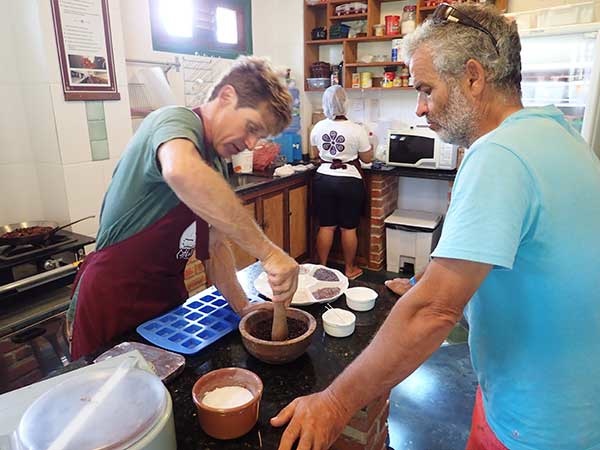Money may not grow on trees but chocolate does!

Caramor - sailing around the world
Franco Ferrero / Kath Mcnulty
Tue 9 Jun 2015 19:58
The cocoa tree is shade demanding and only grows under forest canopy. The cocoa crop was more valuable to landowners than the timber and the bare land, hence the forests have been preserved.
Itacaré is a traditional fishing village which has done well out of upmarket tourism. There is a good selection of beaches from a wild surf beach with strong rips, to a calm water beach protected by a breakwater, and every thing in between. Brazil, it seems, has avoided the type of development typical of the Spanish Mediterranean coast where large hotels are immediately behind the beach and obliterate the landscape. Here, hotels are set back from the beach, usually no taller than two storeys and surrounded with trees. In Itacaré, each hotel / B&B has its own particular individual style, incorporating timber and good design. The street linking the beaches either side of the headland has become the main tourist drag. The houses have been converted in a relaxed bohemian style to hostels, restaurants and boutiques. Street trees have been incorporated into the decor, instead of chopping them down, they have built round them. Ok, so sometimes it makes for a leaky roof but hey, nobody is going to die of hyperthermia!
Itacaré pleasant tourist street
Half way down is the Vila Rosa Chocolate shop. We booked onto a tour to the cocoa farm. When I gave her my name the shop assistant roared with laughter. 'Franco Ferrero' wasn't quite so alien to her Brazilian ear.
Two days later we met our guide outside the chocolate shop. We were amazed to be greeted in perfect English. Allan is a landscape gardener from New York who moved to Itacaré eleven years ago. From an aged spinster, he bought a semi-derilict mansion house built in the 1930s with one hundred hectares of forest, 30km from Itacaré on the road to the village of Taboquinhas. He did the mansion up and named it Vila Rosa. The forest included a cocoa plantation which he brought back into production and uses to make organic chocolate sold in the shop. Allan employs twelve people at the farm. In addition to the chocolate, the house is a B&B and museum and there is a timber workshop making furniture and shop fittings.
Vila Rosa
The workers' quarters have been converted into a cool airy restaurant
Brazilian forests are highly productive, all sorts of fruit and nut trees grow together, in fact need each other. As we walked through Allan's estate, we saw Jackfruit trees, acerola (small red fruit high in vitamins), palm oil trees, banana and cashew trees.
A very diverse forest
Palm oil trees
Young cocoa tree growing under Jack trees
The cocoa fruit grows on old wood on the branches, the flower is pollinated by a small mosquito which prefers bananas and bromeliads so these are planted as well. It takes several years for a cocoa tree to start to produce fruit, so Allan grafts young plants onto old rootstock in the forest, this way he can produce different strains of cocoa on the same tree, reducing the risk from pests and diseases.
Cocoa fruit growing on old bark
The Rio das Contas borders Allan's property. This is the same river we are anchored on, with its source in Chapada Diamantina
Cocoa is affected by a fungus (Moniliophthora perniciosa) which causes the fruit to rot and can kill the tree. It is thought to have co-evolved with cocoa in the Brazilian Amazon but in 1989, it was introduced to the Itacaré region, in an attempt, Allan tells us, to break the power of the cocoa barons. It worked; production was quartered and Brazil went from being the world’s second largest cocoa producer to becoming a net importer (Wikipedia).
Cocoa fruit - the black mark by the stem is fungal infection
The cocoa harvest is done by hand, the fruit are picked and brought back to a central point where they are cut open. Each pod contains 12-15 cocoa beans protected by a delicious white flesh. The hard outer skin is discarded and the beans are pressed to extract the juice from the flesh. This juice is called 'mel de cacau' (cocoa honey) and has to be frozen as it won't keep.
Cocoa bean press
'Mel de cacau' - despite the appearances it isn't alcoholic
The beans are then fermented for a few days. They heat up, are turned and moved into the next box and then the next.
Fermenting box
From the fermenting box, they are dried for a week. This is done on a terrace with a sliding roof so that when it rains the beans don't get soaked. As soon as the sun comes out again, the roof is slid back. At this point, although still very bitter, the beans are starting to taste like chocolate.
Beans drying in the sun
The sliding roof structure
The beans are brought to the kitchen where they are roasted and the husks removed.
Roasting the beans
The beans are coarsely ground using a pestle and mortar and then gradually ground finer and finer until the chocolate becomes smooth and liquid. The finer the grinding, the better the quality of the chocolate. Sugar is added. In a 70% chocolate bar, 30% is sugar. In more commercial chocolates there may be other ingredients such as lecithin. Milk chocolate has added milk powder and white chocolate has no cocoa solids, only cocoa butter and sugar. The mixture is heated to 45 degrees Celsius and then cooled slowly, this process is called 'tempering' and gives chocolate that shiny snap.
Coarse grinding
Unfortunately there are no photos of the finished chocolate as we ate it before I had time to get the camera out.
Kath
